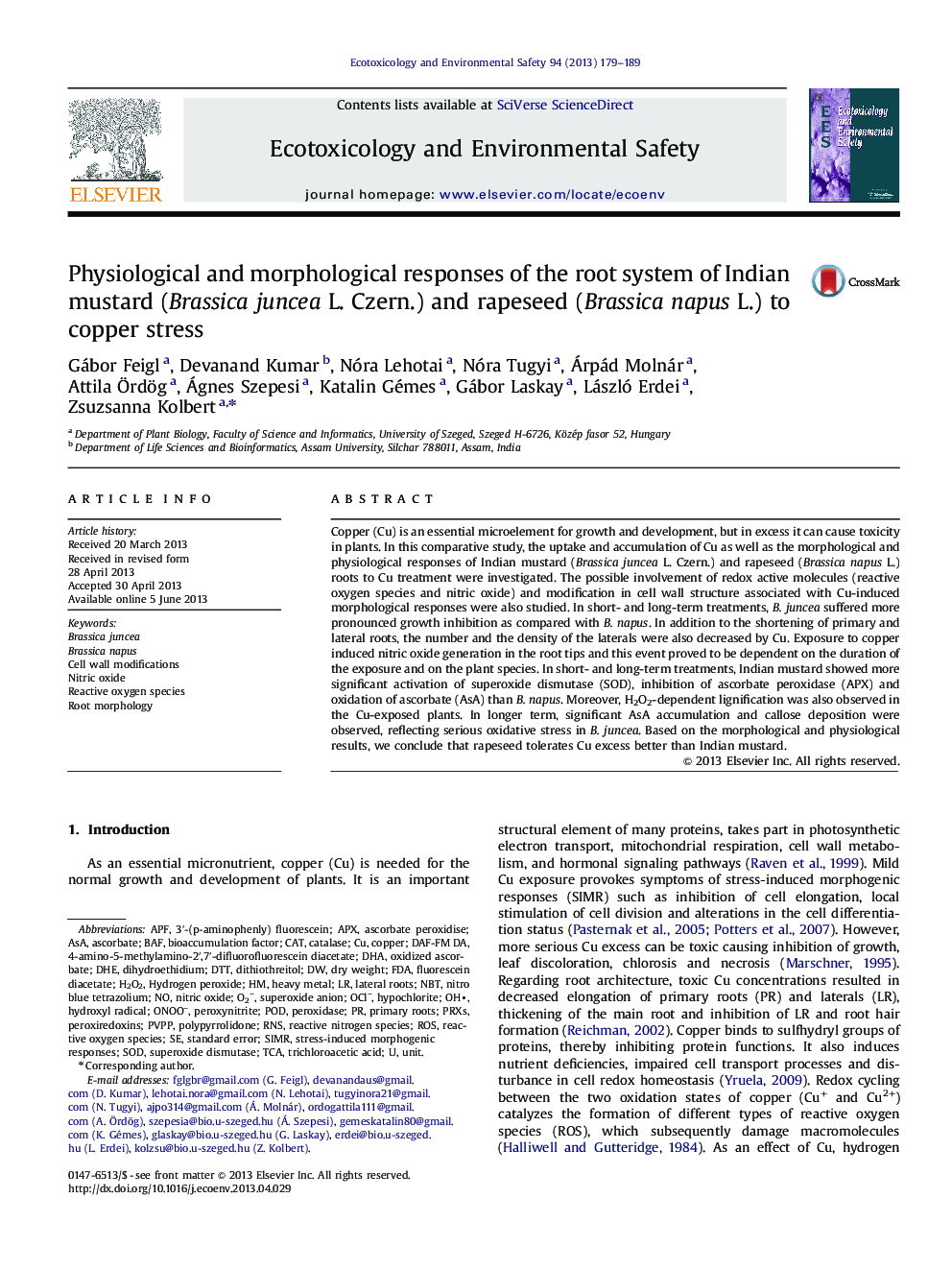| کد مقاله | کد نشریه | سال انتشار | مقاله انگلیسی | نسخه تمام متن |
|---|---|---|---|---|
| 4420500 | 1618969 | 2013 | 11 صفحه PDF | دانلود رایگان |

• We examined the effect of copper excess in the root system of two Brassica species.
• B. juncea suffered more pronounced growth modifications compared to B. napus.
• Copper modified the homeostasis of reactive oxygen species and nitric oxide.
• After long-term copper exposure, serious oxidative stress occurred in B. juncea.
• We conclude that B. napus tolerates copper excess better than B. juncea.
Copper (Cu) is an essential microelement for growth and development, but in excess it can cause toxicity in plants. In this comparative study, the uptake and accumulation of Cu as well as the morphological and physiological responses of Indian mustard (Brassica juncea L. Czern.) and rapeseed (Brassica napus L.) roots to Cu treatment were investigated. The possible involvement of redox active molecules (reactive oxygen species and nitric oxide) and modification in cell wall structure associated with Cu-induced morphological responses were also studied. In short- and long-term treatments, B. juncea suffered more pronounced growth inhibition as compared with B. napus. In addition to the shortening of primary and lateral roots, the number and the density of the laterals were also decreased by Cu. Exposure to copper induced nitric oxide generation in the root tips and this event proved to be dependent on the duration of the exposure and on the plant species. In short- and long-term treatments, Indian mustard showed more significant activation of superoxide dismutase (SOD), inhibition of ascorbate peroxidase (APX) and oxidation of ascorbate (AsA) than B. napus. Moreover, H2O2-dependent lignification was also observed in the Cu-exposed plants. In longer term, significant AsA accumulation and callose deposition were observed, reflecting serious oxidative stress in B. juncea. Based on the morphological and physiological results, we conclude that rapeseed tolerates Cu excess better than Indian mustard.
Journal: Ecotoxicology and Environmental Safety - Volume 94, 1 August 2013, Pages 179–189